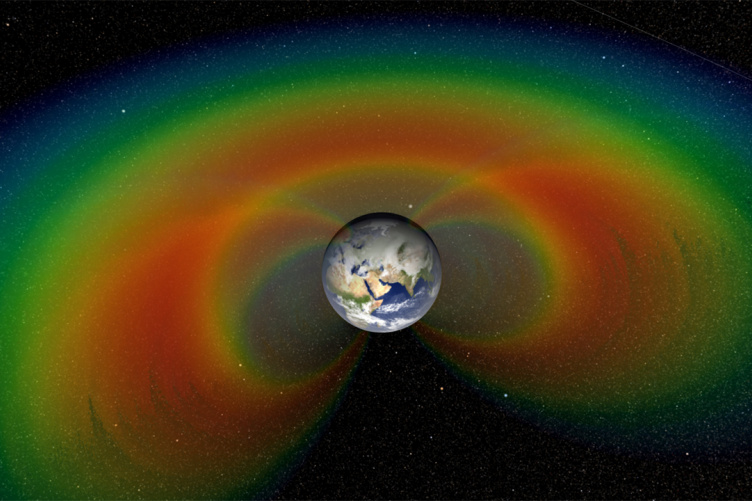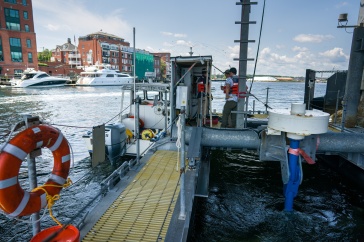
Artist's depiction with cutaway section of the two giant donuts of radiation, called the Van Allen Belts, that surround Earth. Courtesy of NASA.
UNH researchers have captured unique measurements of the Van Allen radiation belts that circle the Earth during an extremely rare solar wind event. The findings, which have never been reported before, may be helpful in protecting orbiting telecommunication and navigational satellites, and possibly future astronauts, by helping to more accurately predict space conditions near Earth as well as around more remote planets.
The study was published in the journal Nature Communications.
The researchers used data from more than 10 spacecraft, including information from a UNH-led instrument on board NASA's Van Allen Probes twin satellites, to get measurements of both the Earth’s inner and outer Van Allen radiation belts, two doughnut-shaped regions of high-energy particles trapped by Earth's magnetic field, during the uncommon solar wind conditions. The results revealed valuable information of unexpected and dramatic changes in the radiation belts, allowing scientists to explore the effect of similar conditions around other Earth-like planets at other stars.
“What makes this very exciting is that this type of interaction between the sun and a planet rarely happens for Earth, but it’s believed to be a frequent occurrence for other Earth-like extrasolar planets,” says Noé Lugaz, a research associate professor at UNH’s Institute for the Study of Earth, Oceans, and Space (EOS), and lead author of the study. “Since the closest of these extrasolar planets is several light years away, these measurements help give us a sense of the radiation conditions that might be occurring around some of those distant worlds that will never be visited in our lifetime.”
Earth is embedded in the always-expanding atmosphere of the sun, called the solar wind, which blows past planets to the edge of the solar system. Typically, the solar wind is supersonic, faster than the speed of sound. When the solar wind encounters planets, a shock wave is created that slows the wind down and deflects it around the planet. However, during the unusual episode, which was caused by the passage of a solar eruption over Earth, the data recorded by the researchers showed the solar wind became subsonic, or slower than the speed of sound. During this interval is when the researchers recorded measurements of the Van Allen radiations belts and found that the outer belt was not as calm as expected. Two unusual phenomena occurred: a long-lasting electron drop in the Earth’s radiation belts and large oscillations in the magnetic field.
“This is the first time detailed measurements of the Earth’s radiation belts have ever been recorded during such rare conditions,” says Harlan Spence, director of EOS at UNH and a co-author of the study. “There have only been a handful of these solar wind events since the beginning of space exploration.”
When the Van Allen belts were first discovered in the 1950s, they were thought to be relatively stable structures, but subsequent observations have shown they are dynamic and mysterious. Unlocking these mysteries could be valuable for newer technologies like telecommunication and GPS satellites, which spend most of their time in the Van Allen belts.
In addition to Lugaz and Spence, EOS researchers Charles Farrugia, Chia-Lin Huang, Reka Winslow and Nathan Schwadron were co-authors.
-
Written By:
Robbin Ray ’82 | UNH Marketing | robbin.ray@unh.edu | 603-862-4864

















































